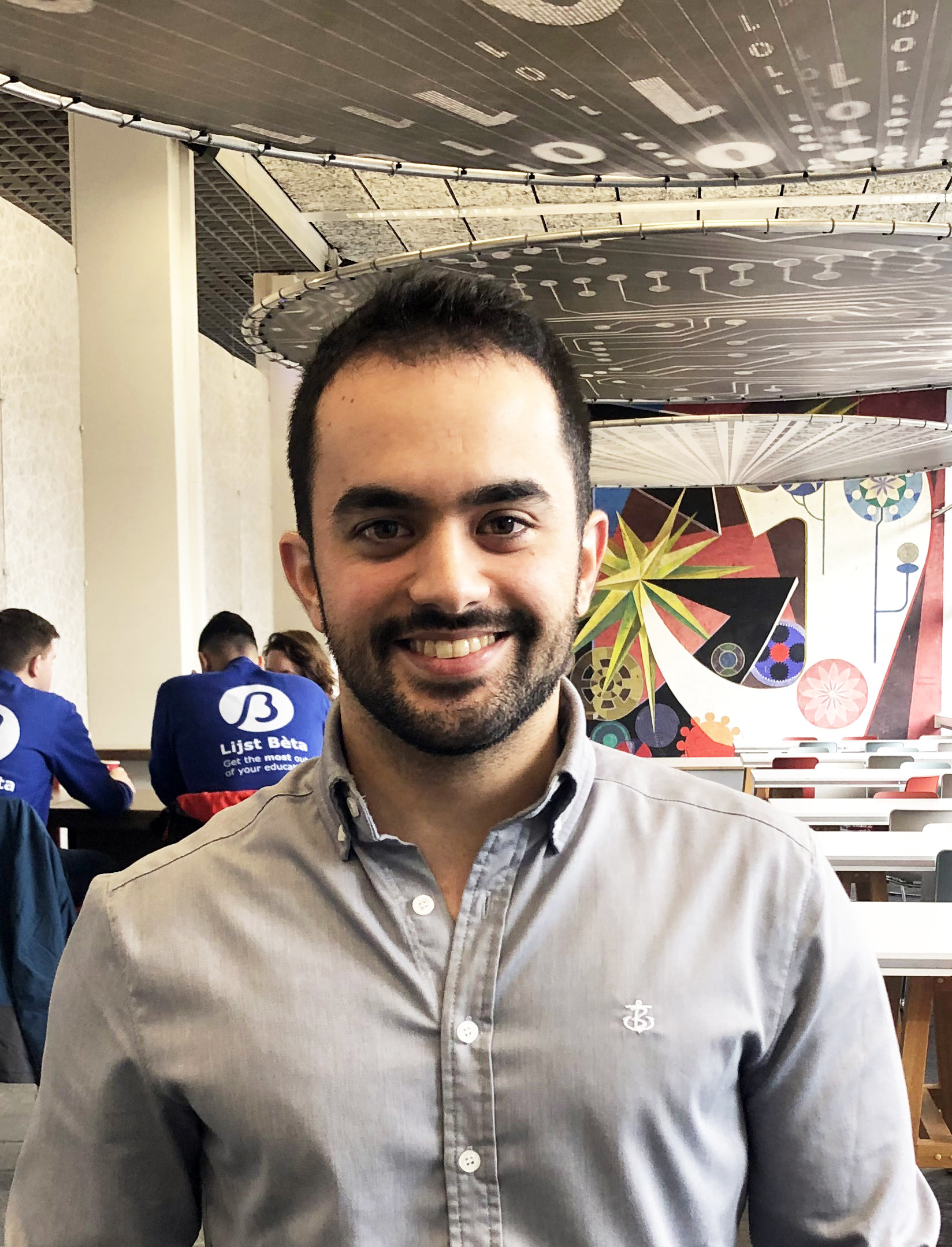Student Alberto brings wireless monitoring a step closer
In September 2017 Alberto Gancedo started his master programme Microelectronics at the Faculty of Electrical Engineering, Mathematics and Computer Science (EEMCS). Alberto’s ambition was bigger than obtaining his degree. His ambition was to develop a small, portable and cheap monitoring device to detect unusual brain activity in premature babies directly after birth. Thanks to donations from EEMCS alumni, Alberto could start his master’s at TU Delft and work towards this ambition. Alberto graduated in the beginning of February 2020 and proudly updates Delft University Fund and EEMCS alumni about his achievements.
Now that you have graduated, what’s the first thing you want to share with EEMCS alumni?
Well, the support of EEMCS alumni really helped me to get my project to point where I wanted it to be: I proved that a small chip can be the solution to an affordable and wireless monitoring device. So first of all, I want to say that I am very grateful for the donations from EEMCS alumni. Because of these donations I was able to study at TU Delft and work on this research in the department of Bioelectronics at the Faculty of EEMCS.
We are curious. Please tell us what has happened in the past 2 years
My life has changed quite a bit. Actually, I wasn’t even planning to start a master programme at all! Yet, during my bachelor education I did an internship in Delft at Healthtech B.V. and that’s how I was first introduced to the aEEG project and to TU Delft. aEEG stands for Amplitude-integrated electroencephalogram. It was my ambition to develop a portable and affordable monitoring device for premature babies. I felt a huge motivation to design something that would actually help babies to be more comfortable while being monitored. I realised I had gotten very passionate about the project and I knew I wanted to continue working on this project during my master’s. Signing up for a master’s degree gave me the possibility to continue the project in Delft, yet I lacked funds. With the financial support from EEMCS alumni I could embark on this journey. I felt super privileged and, honestly, also a bit of pressure to perform.
What are you most proud of?
I used the aEEG project as my master thesis project. The goal of the project changed along the way. Almost half a year into my master’s, my supervisor prof. Wouter Serdijn and I saw an opportunity to take the project to a next level: instead of focusing on developing a device, we changed our focus on the design of a chip. This chip is a unique and more promising solution because, once the design is proven, it can be cheaply produced. This chip is smaller than 1 mm and can be implemented, together with a small battery, on a small patch. This small patch is comfortable to wear for the baby as it has no wires at all. But this change of plan also meant I had to restart my research with less time to do it in. I am, however, really happy that I did because I proved that such a chip can be produced. I even published a paper showing the results of the first iteration of such a chip. Last October, I was invited to present my paper on the Biomedical Circuits and Systems Conference in Japan.
How will your chip eventually help babies?
It took me over one year to design the chip and by the end of this month I expect to receive the chip from the manufacturer. I think it will take one more year before we can start testing the patch on patients in hospitals. As soon as we enter that phase, I expect that things will move fast. The main advantage of the patch is the lack of wires, so patients will be able to move around freely while being monitored. The patch is not only useful for monitoring the brain and heart activity of babies, but for example also for athletes who need to monitor their heart signals during exercise. Another main advantage of this patch, and chip, is that the production costs are very low. This will make it usable in developing countries as well. The patch can be used to monitor patients without having a doctor close by.
What’s your plan for the future?
We have actually filed a patent for the chip and we may try to develop it further ourselves and launch a start-up. But at the moment it’s just a little too early to say. I will keep you updated!

